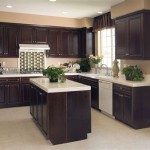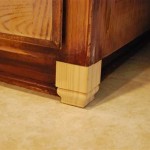What Type of Stain is Best for Kitchen Cabinets?
When it comes to kitchen cabinets, choosing the right stain can make all the difference in the overall look and feel of your space. With so many different types of stains available, it can be overwhelming to know where to start. In this article, we'll explore the essential aspects of stain selection, providing you with the information you need to make an informed decision for your kitchen.
Dye vs. Pigment Stains
There are two main types of stains: dye stains and pigment stains. Dye stains penetrate the wood fibers, creating a translucent effect that allows the wood grain to remain visible. Pigment stains, on the other hand, sit on top of the wood, forming an opaque layer that obscures the wood grain. Dye stains are typically less durable than pigment stains, but they offer a more natural look.
Choosing the Right Color and Finish
The color and finish of the stain will significantly impact the overall aesthetics of your cabinets. Consider the existing color scheme of your kitchen and the desired ambiance you want to create. Lighter stains, such as white or cream, can brighten up a space, while darker stains, such as ebony or mahogany, can add warmth and sophistication. The finish of the stain can also vary, with options ranging from glossy to matte. A glossy finish reflects light, creating a more modern look, while a matte finish absorbs light, providing a more subtle and understated appearance.
Durability and Maintenance
The durability of the stain is an important factor to consider, especially in high-traffic areas like kitchens. Pigment stains are generally more durable than dye stains and can withstand wear and tear better. However, all stains require proper maintenance to preserve their appearance over time. Regular cleaning and occasional touch-ups may be necessary to maintain the beauty and longevity of your cabinets.
Environmental Considerations
If environmental consciousness is a priority for you, consider using eco-friendly stains. Water-based stains are less harmful to the environment than oil-based stains and emit fewer VOCs (volatile organic compounds). Water-based stains also dry faster and produce less odor, making them a safer and more convenient option.
Conclusion
Choosing the right stain for your kitchen cabinets is a multifaceted decision that involves considering factors such as dye vs. pigment stains, color and finish, durability, maintenance, and environmental considerations. By carefully evaluating these aspects, you can select the stain that best complements the style of your kitchen and meets your practical needs. With proper care and maintenance, your stained cabinets can provide years of beauty and functionality, enhancing the enjoyment of your culinary space.

The New Cabinet Stain Colour For Kitchens Trends Wood

Which Types Of Wood Look Best With Espresso Stain
8 Best Cabinet Finishes Paints Stains Glazes And More Vevano

Staining Kitchen Cabinets Pictures Ideas Tips From

The Most Durable Kitchen Cabinets And Cabinet Finishes

The Best Wood Stain Colors I Used In My Home Amanda Katherine
8 Best Cabinet Finishes Paints Stains Glazes And More Vevano

Best Wood Types For Kitchen Cabinets Cabinet

Best Finishes For Kitchen Cabinets Cabinet Doors N More

How To Make Rustic Kitchen Cabinets By Refinishing Them The Best Stain Color Amanda Katherine
Related Posts








